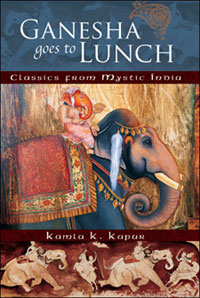|
Kamla Kapur(continued) Interview by Dr. Nilanshu Kumar Agarwal As an awakened Indian writer living in the States, what do you
think are the major tangling problems faced by Indian Diaspora in USA? I don't know how "awakened" I am! Certainly, it continues
to be my endeavor and my passion. I can only speak for myself, though
many books have come out in the subject that I haven't read. The characters
in my current novel are not "Diaspora" characters as such,
though they are characters with some of its concerns, especially the
concerns of first-generation Indians in America: missing India, missing
family, missing the "rawnuk," finding it difficult to cope
with a culture that puts so much emphasis on individuality, when people
in India are more used to communal lives. The subject is immense and
would take more time to explicate than I have here. What are the major cultural differences between America and India? Now this is a huge question that I cannot even begin to address in an interview like this. It would take tomes! If I had to isolate just one of the differences (quite arbitrarily), and deal with it very superficially in a paragraph, I would say it has to do with the way family continues to be of prime importance in India while the West, still going through the growing pains of individuality, is moving more and more in the direction of individuation, a journey that Indians haven't even embarked upon yet. But global capitalization is a unifying force, and we are already seeing its effects on family life in India. It is inevitable, though not quite imminent. And with this difference comes a whole host of different ways of living and being. As a woman writer, did you feel any problems in your literary career?
How will you describe the two cultural groups — Eastern and Western
— in their approach towards a female author? The difficulties in my writing career have had nothing to do with my
gender. If anything, this is a very fertile period for women's voices
to be heard. We have female writers whose voices have reached the global
stage. My difficulties were entirely my own. I think both cultures are
open to female voices, and about time, too. In your long career, you have been a teacher, journalist and a creative
writer. Out of these, which one is closest to your heart? Or, do you
find some inner relationship among these various roles? I have given up the first two roles to focus on the last. As I get
older I have limited energy and time. I had to prioritize. I gave up
journalism first, because I did not want to be writing edible, fleeting
print. Teaching was far more congenial in that I taught subjects I myself
have learned immensely from. But it was time-consuming, and now I am
happily focusing on writing alone. I am also moving towards more yoga,
meditation, and exercise, and reading a lot. What will you say about your two novels — The Autobiography
of Saint Padma the Whore and Malini in Whirlwood? The Autobiography of Saint Padma the Whore is the fictional
story of a woman's quest for love and freedom. Spanning three decades,
from the '60s to the '90s, it moves between India, the USA, and Saudi
Arabia. It is loosely structured on the myth of Ulysses and Penelope,
less as a parallel than as a contrast. An abyss of time separates Padma
and Penelope, yet they share some important connections. While waiting
for their mates, both weave tapestries, the former with yarn, and the
latter with words; both long for a kind of partner that is truly an
equal. Their stories serve as portraits of artists as women. Tell something about Ganesha Goes To Lunch and Radha Sings. Like myths around the world, Ganesha Goes to Lunch: Classics from Mystic India are traditional Indian stories which offer both a window into a fascinating culture that has endured for thousands of years, and a code for living that can be applied to the modern world. [A reviewer writes] Kamla K. Kapur's Ganesha Goes to Lunch: Classics
from Mystic India (Mandala Publishing, $14.95 trade paperback, April
27, 2007), is an offering of 24 insightful tales. "They are reminders
from spaceless eternity of the fabric of which we are made. They awaken
us, and help us live with, and within, the mystery that is the matrix
of our being." Radha Sings are contemporary, semi-erotic poems written from
the point of view of a modern Radha to her Krishnas. What are your future writing projects? I am currently in the beginning stages of writing two novels.
|
